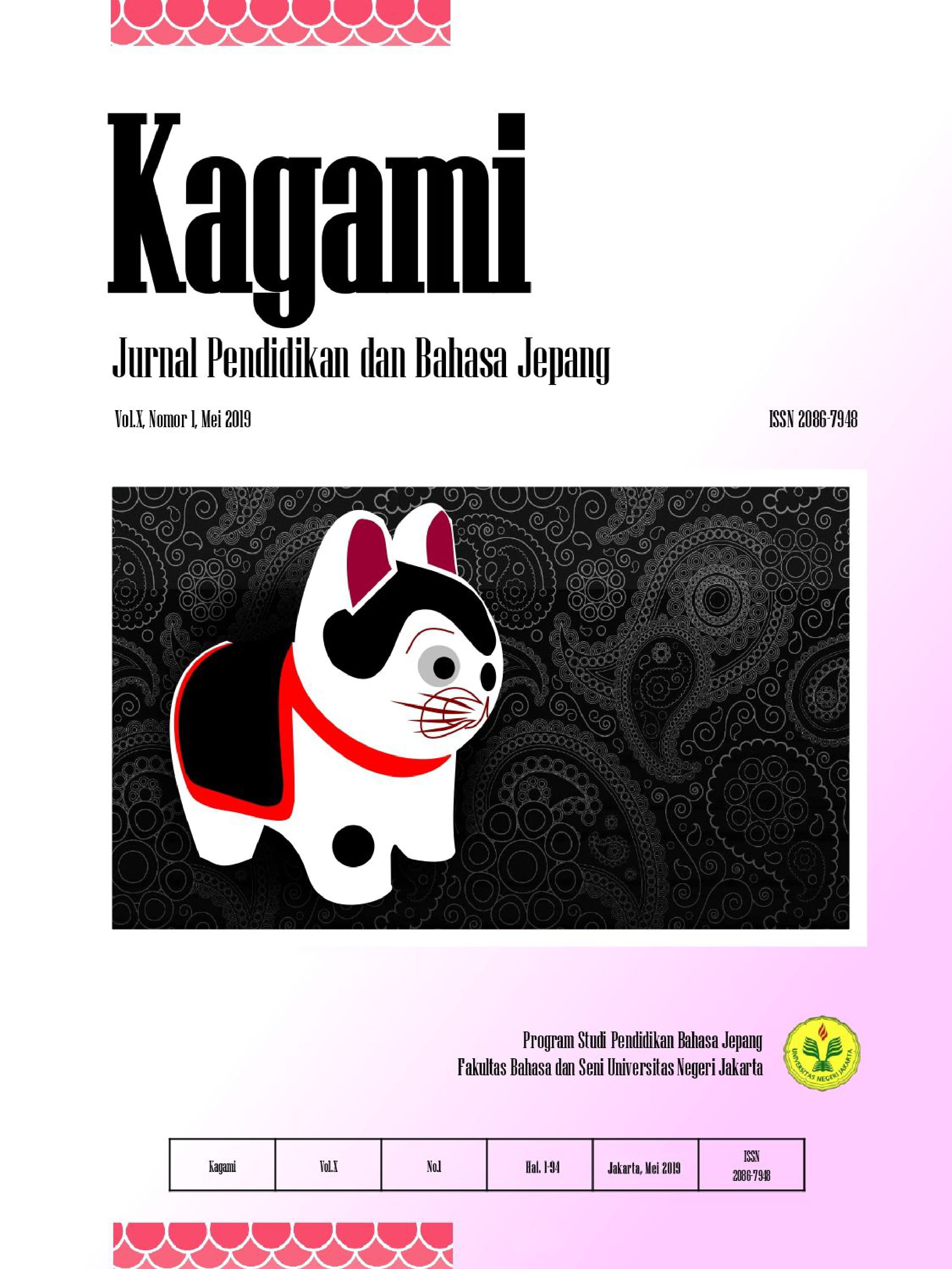ANALISIS PENGGUNAAN PARTIKEL MO, DEMO, DAN SAE DALAM KALIMAT BAHASA JEPANG
Keywords:
auxilliary word, toritatejoshi, Japanese sentenceAbstract
In the Japanese language there are more than one word that can be use alternatively, such as auxilliary words. Auxilliary words like mo, demo, and sae occasionally identified to have the same meaning of usage in Japanese sentences. Therefore, the writer will begin to research these auxilliary words based on the situation which the student has a lack of knowledege about the usage of these auxilliary words in depth. The purpose of this research is to know the structure of auxilliary words mo, demo, and sae, the meaning of usage of auxilliary worlds mo, demo, and sae, and also to know the similarity and difference between the auxilliary words mo, demo, and sae. This research will use the descriptive qualitative method and will use some technique such as components of meaning and substitution to analyze the data. The results of this research are auxilliary words mo, demo, and sae appears to be much more attached between other auxilliary words and noun. The usage of these auxilliary words that can be substituted each other can be found when they are showing something extreme. But all of them makes the meaning of the sentence different. Mo cannot show something extreme like sae does. Demo shows something extreme while there are other things that have a chance to also appear together and appears much more in undefined sentences. Sae has much more characteristic to show extreme things clearly, compared to mo and demo.
References
Chaer, Abdul. 2012. Linguistik Umum. Jakarta: Rineka Cipta.
Chaer, Abdul. 2009. Sintaksis Bahasa Indonesia (Pendekatan Proses). Jakarta: Rineka Puspita.
Chaer, Abdul. 2009. Pengantar Semantik Bahasa Indonesia. Jakarta: Rineka Puspita.
Chino, Naoko. 1993. All About Paricles. U.S.A: Kodansha International Ltd.
Dahidi, A dan Sudjianto. 2007. Pengantar Linguistik Jepang. Jakarta: Kesaint Blanc.
Iori, Isao, et al. 2000. Shokyuu o Oshieru Hitono Tame no Nihongo Bunpou Handobokku. Tokyo: Suriie Network.
Iori, Isao, et al. 2004. Chuujoukyuu o Oshieru Hitono Tame no Nihongo Bunpou Handobokku. Tokyo: Suriie Network.
Kawashima, Sue A. 2013. A Dictionary of Japanese Particles. New York: Kondansha USA.





